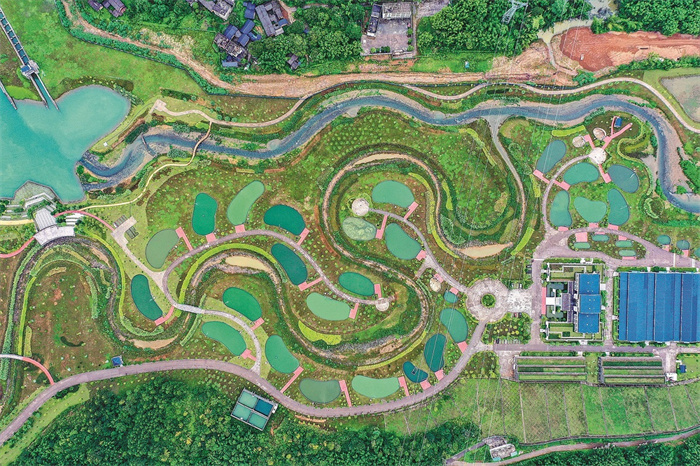Conservation protects fish stocks in Guangxi
Editor's note: As protection of the planet's flora, fauna and resources becomes increasingly important, China Daily is publishing a series of stories to illustrate the country's commitment to safeguarding the natural world.

An overhead view of the fish ladder along the Nanmu auxiliary dam of the Datengxia Gorge Water Conservancy Hydropower Project in Guiping, Guangxi Zhuang autonomous region. It is one of two fish ladders built along with the project. CAO YIMING/XINHUA
Zhang Jiajun, the assistant director of the Hongshui River Conservation Center for Rare Fish, is embracing his busiest time of the year.
Split into two shifts, he and his six-member team have to live in their office from March to July.
"We are especially busy in April and May. For several months, I am barely home for more than three days," the 33-year-old said.
The Hongshui is a major river in South China's Guangxi Zhuang autonomous region and a main tributary to the Pearl River. After joining the Liujiang River in Guangxi, it is called the Qianjiang River, which powers the 1.6-gigawatt Datengxia Gorge Water Conservancy Hydropower Project in Guiping, Guangxi, that came online last year.
For Zhang, the busiest season means that he has to make sure the rare fish conservation center's stocks of fish fry are regularly fed in order for them to be ready for release back into their natural habitat.
The fish have to be fed every two to three hours, and it is intense work, with Zhang claiming it's the reason for his thinning hair.
Stretching 660 kilometers, the Hongshui spans Guizhou province and Guangxi, but as it is located in the Pearl River Basin it falls under the jurisdiction of the Pearl River Water Resources Commission.
With the hydropower project creating tangible changes to the river ecosystem, the center, established in March last year, is focused on ensuring that the ecosystem not only survives but prospers in its new form.
The center is part of a series of measures introduced along with the hydropower project to protect the existing ecosystem.
Other measures include two enormous "fish ladders". They are a series of artificial structures — for example, connected artificial lakes and ponds that, depending on the flow of the water, allow fish to navigate the dammed sections of the river either upstream or downstream. In addition to the "ladders", there are also two fish stocking stations, four floating artificial fish habitats and one artificial spawning ground.
Altogether, the scale of the system outpaces similar ecosystem-protecting efforts in any other water conservancy projects, according to Guangxi Datengxia Gorge Water Conservancy Development Co, the project's builder and operator.
